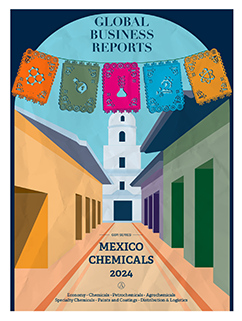
"Pricing variability has made mining companies somewhat hesitant to invest in capital projects, despite favorable commodity prices."
Eric Smith
MANAGING DIRECTOR, CEMENTATION AMERICAS
Can you provide a brief overview of Cementation Americas' highlights in 2023?
The year 2023 was a successful year for Cementation Americas, with a standout achievement being the exemplary safety performance of our Canadian team. They achieved zero-harm for the calendar year, showcasing our proactive safety culture. Our revenue reached one of the highest levels in recent years, thanks to strategic partnerships with major clients in North America.
What is driving the demand for Cementation Americas' services in Ontario?
In Ontario, we have observed similar circumstances in that majors are focused on continuing capital projects and initiating fewer greenfield projects, though we have seen a slight uptick recently. We attribute the significant distinction to the regulatory environment, which is much more mining-friendly in Ontario. This encourages companies to invest confidently in ongoing operations. Moreover, Ontario has more industry players compared to the western US, providing additional opportunities.
Can you elaborate on the challenges that Cementation Americas has faced in Ontario in the past year?
We have witnessed a significant rise in cost inputs, particularly in labor, which typically constitutes over 50% of our revenue. Additionally, raw material costs have increased, although there is a recent tapering off from the high rates observed post-COVID. While we hope for further stabilization, this pricing variability has made mining companies somewhat hesitant to invest in capital projects, despite favorable commodity prices. Ongoing global events, such as the wars in Ukraine and the Middle East, also add to the prevailing uncertainty in the industry.
How would you compare Ontario and the western US as mining destinations?
In both the western US and Canada we deal with abundant resources and robust environmental regulations that prioritize land protection, stewardship, and sustainability. While there have been challenges in the past, modern ecological regulations are extremely effective. On the whole, Canadians show greater awareness and support for mining, whereas in the US, there is often a lack of understanding when it comes to modern mining amongst the general public. Permitting in Canada seems to have a more measured approach, whereas in the US, changes with each administration can impact years of progress. Despite challenges in both jurisdictions, Canadians typically display more support for mining, balancing economic benefits with stringent environmental expectations.
Have you struggled to find skilled labor?
I find that in Ontario, there is a larger pool of skilled labor due to greater opportunities, educational focus, and a long history of mining as a career path, especially in historical mining camps like Sudbury. In the US, while we have been successful in attracting skilled labor, the pool is inherently smaller. We are anticipating a significant labor shortage due to retirements and fewer people entering the industry. To address this, we are exploring technological solutions, shifting towards mechanized equipment, and partnering with local stakeholders for enhanced and condensed training programs. In Canada, we are collaborating with Indigenous partners to deliver regionally customized mining training programs, and in the US, we are exploring partnerships with community colleges for new hire training to ensure a sustainable skilled workforce for the future.
How has the increasing trend of automation and digitalization impacted Cementation Americas?
We have embraced digital innovations to enhance our operations. A couple of years ago, we shifted from manual data collection to a computerized approach, eliminating the need for manual data entry.
Of note, we have partnered with a software provider to implement short-interval control at our sites. Employees now use handheld devices to input real-time data, allowing supervisors to make immediate and informed decisions during shifts. This granular, constantly updated information not only facilitates continuous improvement but also provides the ability to practice even more proactive safety measures and aggregates crucial records for assessing project costs and productivity. While we have not implemented this system everywhere due to network constraints, especially in areas without LTE or underground wireless networks, we are making remarkable strides as data continually becomes a valuable commodity for service providers like ourselves. The information on how work is done, costs, and resource requirements are essential for adding value to existing projects and bidding on future ones, enabling us to stay competitive and constantly refine our approach.
What are your priorities for the coming years?
In the western US, we are currently engaging with a major mining company in Nevada, marking an exciting opportunity for long-term collaboration. In Ontario, we are concluding a groundbreaking shaft project in northern Ontario, overcoming technical hurdles in constructing the deepest shaft in the Sudbury Basin. Looking ahead, we are enthusiastic about maintaining our skilled shaft team's momentum. Additionally, we are focused on innovative approaches, like mechanized equipment for ground support installation in the Canadian Shield, and plan to extend such practices to other project sites. Our goal is to not only meet but exceed expectations, fostering growth and success beyond 2024.











